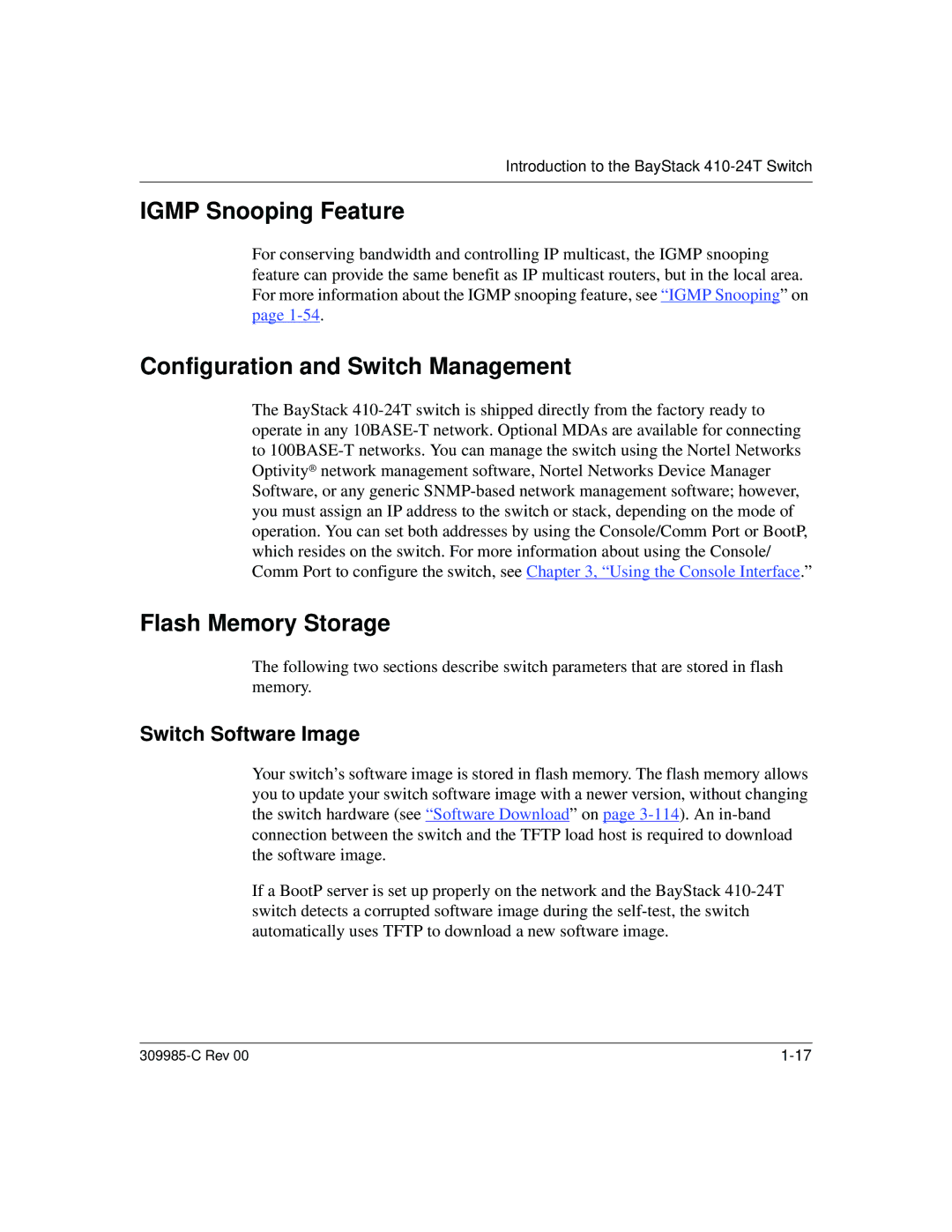
Introduction to the BayStack 410-24T Switch
IGMP Snooping Feature
For conserving bandwidth and controlling IP multicast, the IGMP snooping feature can provide the same benefit as IP multicast routers, but in the local area. For more information about the IGMP snooping feature, see “IGMP Snooping” on page
Configuration and Switch Management
The BayStack
Flash Memory Storage
The following two sections describe switch parameters that are stored in flash memory.
Switch Software Image
Your switch’s software image is stored in flash memory. The flash memory allows you to update your switch software image with a newer version, without changing the switch hardware (see “Software Download” on page
If a BootP server is set up properly on the network and the BayStack
|
